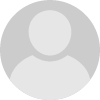Powdery Goodness: The 4 Advantages of Using Powder Coating Process
Technology has advanced to a point that when you're trying to complete a task, you could probably do it in one of several ways. If you want to send a document to a colleague several states away, you have the choice between traditional mail, fax, e-mail and/or through a messaging platform. If you want do drink coffee you can use an espresso machine or by manually brewing them, which can be achieved in a number of different ways. If you want to apply a coating, applying them with a brush is no longer the only option as the popular powder coating process is available as an option.
As a coating application process, powder coating isn't all that new as it's been widely used all throughout the 70s but even among the general public, actual knowledge on powder coating remains somewhat minimal. As a coating application process, powder coating isn't applicable everywhere and it's not as easy to do, requiring the use of special equipment and trained operators but they do have several objective advantages over conventional applications, hence the popularity of powder coating as a process.
The gritty details of powder coating
One of the most popular commercial uses of powder coating is for automotive applications. In automotive applications, powder coating is typically applied using an electrostatic, which relies on the properties of electromagnetism to ensure that the coating stick to the substrate. Simply put, an object that is electrically charged is capable of exhibiting some magnetic properties. In powder coating applications, the coating in powder form is fired through an electrostatic gun which imbues the coating with a positive electrical charge.
The substrate on the other hand is grounded, giving the substrate a negative electrical charge. Opposites, as we all know from the countess romantic comedies Hollywood has given us, attract each other, which allows the powder coating to stick to the substrate. This however is only half of the process as the substrate and the coating is then heated until the powder coating melts all over the substrate. They're then cooled to allow the melted coating to solidify to create a layer of durable coating over the substrate.
The fact that powder coating has to be applied with an electrostatic gun is why they should be left to the pros. Unlike spray-painted coatings that could technically be done by everyone, powder coating is a bit limited since you're going to have to leave your car at the shop while the coating is applied. The curing process is also somewhat difficult since there's excessive heat involved. All this hard work however isn't for nothing as powder coating carries several inherent advantages to outweigh these difficulties.
Less time, more efficiency
When you're working with coatings in liquid form, there's only so much you can apply at any given moment before the coating starts to sag. You could only apply one layer and wait until that layer dries before you can start applying another layer. If you're trying to hit a certain level of thickness, which you can always check with thickness gauges such as an Elcometer, you're going to have to be extremely patient. With powder coating, you never have to worry about all this.
The amount of coating you can apply in one cycle with powder coating far outpaces that of liquid coating. In fact, it's quite unlikely you'll need more than one cycle when it comes to powder coating. Additionally, because powder coating make use of the attraction between the coating and the substrate, there's far less overspray as the coating would naturally gravitate to the substrate, meaning a higher transfer rate. Believe me when I say that the time you save and the less waste you produce makes up for all the additional complications.
Thanks to the sophisticated application and curing process, powder coating sticks better to the substrate than the average liquid coating. Powder coating is also somewhat more flexible, allowing them to bends, expands and contracts together with the substrate without any risk of damage. Of course, this level of adherence assumes that you've done the necessary surface preparation before the application process but all things being equal, they're capable of creating a stronger bond compared to the average liquid coating.
No solvent means safer application
The reason why liquid coating comes in liquid form is because they contain solvent and VOC and when the coating dries, these solvents evaporate into sometimes highly toxic fumes, requiring you to use goggles during application. You still have to wear a mask when applying powder coating but the powder itself isn't particularly toxic because they don't contain any solvent. Additionally, unlike liquid coating that is often highly flammable, powder coating carries no such risk, making them a much safer option compared to liquid coating.
Easier to achieve an even coating
The tricky thing when it comes to liquid coating, even if you're using a sprayer, is that achieving an even coating surface can be difficult. Liquid coating runs and sags and when you're trying to achieve a desired thickness, applying the coating in multiple layers increase the chances of defect since you now have several different layers to take care of. In contrast, powder coating automatically levels, to a certain extent, during the application and curing process, making it easier to achieve an even coating surface.
Higher level of adherence
Thanks to the sophisticated application and curing process, powder coating sticks better to the substrate than the average liquid coating. Powder coating is also somewhat more flexible, allowing them to bends, expands and contracts together with the substrate without any risk of damage. Of course, this level of adherence assumes that you've done the necessary surface preparation before the application process but all things being equal, they're capable of creating a stronger bond compared to the average liquid coating.








